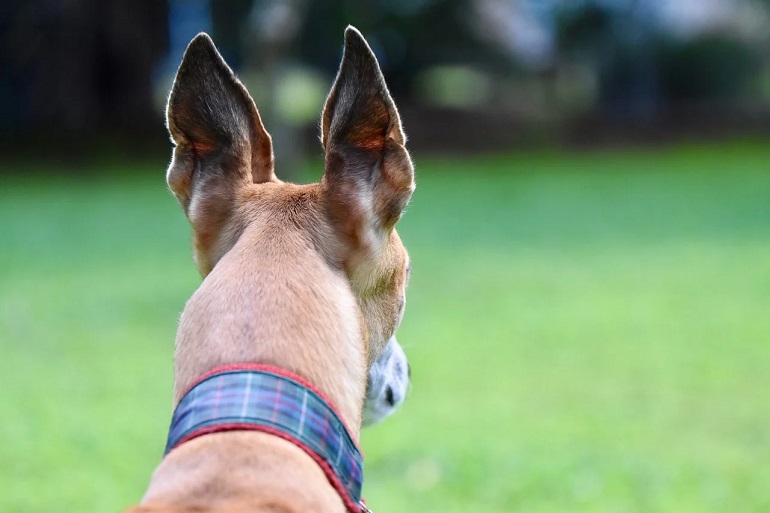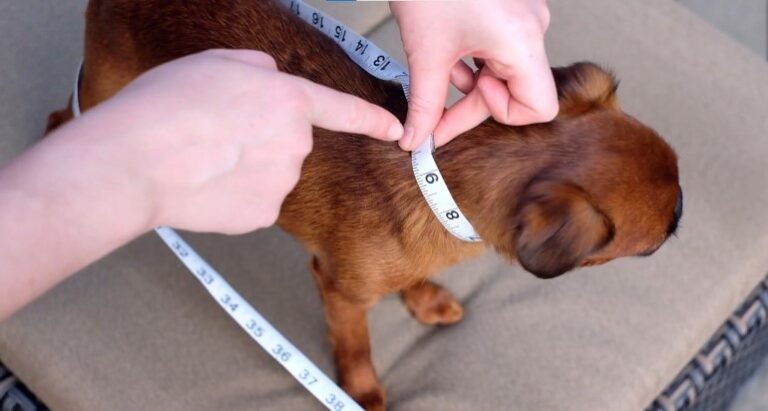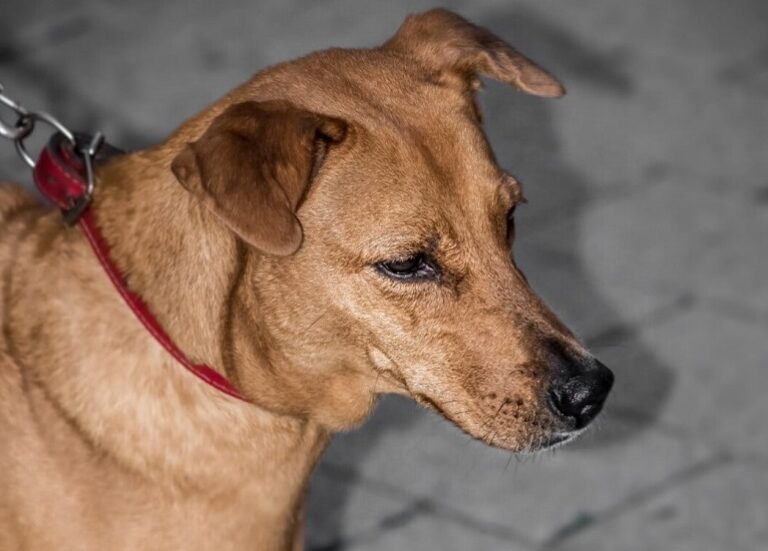Ensuring your dog’s collar fits just right is crucial for their comfort and safety. An ill-fitted collar can lead to discomfort, breathing difficulties, or even escape. Understanding how tight your dog’s collar should be is essential knowledge for any responsible pet owner. This comprehensive guide will explore the optimal collar fit, signs of an improperly fitted collar, and tips for selecting the right type for your furry friend. With the right fit, your dog can enjoy secure, comfortable adventures, while you gain peace of mind knowing they are safe. Join us as we delve into all you need to know on this vital topic.
Dog collar is an essential dog accessory that enhances the safety of the dog and others around them. They’re important for carrying your dog tag, thereby providing a relatively safer way to restrain your dog while outdoors.
Usually, when buying a dog collar, many dog owners do not take their dog to the pet shop; instead, they prefer to order online. Oftentimes they are unable to measure the size correctly.
So, the dog collar feels loose or tight around the dog’s neck. Both of these situations can be irritating and harmful to your furry friend. It is recommended to measure for dog collar correctly before your buying spree.
One needs to know the right size of the dog neck so that there is room for adjustment. If you are a dog owner, you better understand how tight should a dog collar be if you do not want your dog to suffocate or run freely.
How Tight Should a Dog Collar Be?
The size of a dog’s neck varies from breed to breed and coat. Therefore, we cannot generalize a set measurement figure for all dogs. Moreover, the types of dog collar, material, shaping, and style also determine the fitting around the dog’s neck.
Size It Right
If you are purchasing the dog collar online, one way of estimation can be the reference size charts, but the risk of accuracy still prevails. Therefore, the veterinary experts have a rule of thumb for the ease of dog owners.
Two-Finger Rule
According to the two-finger rule, you need to insert your index and middle fingers into the dog collar and neck to assess perfect fitting.
- If your fingers slide in easily, but there is a snuggle between the dog collar and the dog’s neck, then you have the perfect fitting for the dog collar.
- The dog collar is exceptionally tight if you apply force to sneak in the fingers.
- If your two fingers do not stick between the dog’s collar and neck, the fitting is too loose to be around a dog’s neck.
But, if your dog is too small, slide a single finger, and if it’s a huge dog, it will be three fingers.
However, you can fix these problems by adjusting the dog collar. Most dog collars have adjustment holes on the straps to fit according to the size of the dog’s neck.
In contrast, you can look for exchange offers or replacements if your dog collar does not have this option. Of course, it is always better to shop for a good fit first, but you can surely improve your mistakes.
Types of Collars
Many different types of dog collars are available for various individual preferences and requirements:
Fabric Collars
Most common types of lightweight collars made of nylon or neoprene. These kinds of dog collars and leashes are popular because of their convenience and affordability.
Metal Collars
More suitable for dogs with short coats. These are usually used for dog training, like prong collars, to control bad behaviors in your canine companions.
Leather Collars
Famous for their sturdy nature and long life. Leather collars are comparatively more expensive than other regular collars but will last you a lifetime.
Lighted Collars
Perfect for visibility during nighttime walks. Reflective collars and LED dog collars are great for your dog’s safety in dimly lit areas.
Martingale Collars
Great for controlling larger dogs. Martingale collars provide a more humane approach to restraint and training your powerful pets.
Electronic Collars
Ideal for tracking your pets. GPS trackers and smart dog collars help in tracking dogs’ activities and locating lost dogs.
How to Measure for a Dog Collar?
Measurements are necessary for the exact sizes and perfect fittings of any piece of wardrobe, whether for a human or a dog. For this purpose, one must take accurate or near to precise measurements of the neck circumference to buy the right collar.
These measurements will help you with online and offline shopping for dog collars. You must follow the following steps to get the measurements:
Measure Your Dog’s Existing Collar
One of the easiest ways to get the correct collar size is by measuring the old collar your dog wears. It can work only if it fits comfortably. Otherwise, you may need to improvise by adding or subtracting inches according to how tight or loose it feels on your dog.
Get a Measuring Tape
The first instrument that you need is a soft tape measure. You can take a flexible measuring tape used for clothes or sheets.
Please do not use the metal ones because the dogs can be impulsive at times, and you may risk injuring their neck. So, getting a soft plastic tape to do your job without harming the innocent pet is better.
Measure Your Dog’s Lower Neck
The next step is to determine where to measure around the dog neck. For this purpose, you must check where you usually tie the dog collar. In general, the dog collar sits at the lower neck of the dog. So, measuring the dog’s lower neck is safe to get the exact dog collar’s size.
Wrap the tape around the dog’s lower neck and note down the figure at the intersection of the tape. This number gives you the size of the neck that you can utilize while buying a dog collar, either in-person or online.
Reference the Manufacturer’s Sizing Chart
The sizing charts are a great help for new buyers. Once you get your dog neck’s right measurement, you can compare it with the reference sizes on the chart to get the perfect fit for the new collar.
These reference sizing charts are available at stores and online websites for your help. These are most helpful during online shopping as you cannot try on the dog collar, so you trust the math and place the order accordingly.
The measurements and sizes may vary from manufacturer to manufacturer, so getting the product closest to your measurement figure is better.
Why a Properly Fitting Collar Is Important
When talking about dog collars, we are not prioritizing fashion but favoring the dog’s comfort.
Various collars are available on the market today (as discussed above) for different requirements and individual preferences. These include chain collars, shock collars, prong collars, reflective collars, flat collars, GPS collars, pinch collars, and dog harness for all kinds of dogs.
The collar should feel snug on your pet, allowing your dog to breathe, eat, drink, and move its neck freely.
However, it should not be so loose that the dog can escape its neck from the collar, nor should it be too tight that it gets difficult to turn its head. Therefore, it is essential to get a properly fitted collar so that you can ensure your dog’s safety and comfort at the same time.
A loose collar can make your dog end up in a fetal position, as the dogs can get stuck in their paws or legs in the loose portion of the dog collar. Resultantly, it can harm their bones and may even result in serious consequences.
On the other hand, a tight collar can cause skin irritation and may even make your dog choke to death. You would not want to lose your dear friend due to negligence while buying a proper fit of the dog collar.
Signs That Your Dog’s Collar Is Too Tight
The innocent dogs cannot express their pain and feelings in words, so it is at your end to understand their body language.
You can observe them and their actions to assess whether they are in pain or not. The detection of signs can help you in timely reactions and precautions.
If the collar is too tight around the neck, it can make them uncomfortable. It can cause shortness of breath, difficulty consuming food and water, etc.
The primary signs that show your dog’s collar is too tight includes:
Coughing
The tightness of the dog collar can initiate coughing in your dog. This action can be the first sign that the dog collar is too tight, so you better not neglect it. Although, you can give your dog some medicine, first, try to loosen the dog collar and see if it works.
Lethargy and Shortness of Breath
If you suddenly notice that your dog is not as active as before, then beware that it is another sign of the tightness of the dog collar. Moreover, if you see your dog having a short breath, instantly loosen the collar.
The excessive pressure on veins around the neck can make it difficult for them to breathe. Eventually, they struggle hard to breathe, resulting in the pet’s lethargy.
Chafing and Loss of Fur
The tightness of the collar is the leading cause of chafing and loss of fur on your dog’s body. The tight grip and friction of the collar strap can cause skin irritation and itchiness on the neck. This discomfort can be disturbing for both the dog and its owner.
Moreover, the loss of fur can affect the appearance of the dog. The loose hair is all over the place on rugs, couches, and even your clothes.
It can be embarrassing and can even cause allergic reactions in some people. Therefore, putting on a collar that is too tight around your dog’s neck is not advisable.
Should I Take My Dog’s Collar off at Night?
Every living thing has the right to relax and have some rest. Therefore, one must not torture the pets by keeping the pet collar around their necks 24/7.
If your dog is well-behaved and does not hop around at night, you should never leave on the collar.
Night is a relaxing time for all, so why should we bother these innocent animals with the excessive pressure around their necks? The constant and persistent use of a pet collar can damage the structure of a dog’s neck.
It can also affect their breathing and eating habits in the long run. It can also make them tiresome, and they will not be as active as before. So if you want a healthy and playful pet, you better take the collar off at night.
Final Thoughts
A normal dog collar is an accessory that helps keep them safe and sound inside and outside the house with proper identification tags.
However, these should not be too tight around the neck because they will do no good to the dog’s health. The tight grip can cause injury, chafing, cuts, bone deformation, and even choking due to shortness of breath.
So it is better to get the perfect size for a pet collar. Once you have the measurements, you can use them for comparison with the reference sizing chart of the manufacturers. In this way, you can have the exact size for the dog collar.
Regularly check your dog’s collar to ensure it doesn’t bother them while in growing phase. Getting an adjustable puppy collar for your growing pups is also a good idea.
Also, you must monitor your dog and its behavior to detect any discomfort. Loosen or adjust the dog collar strap according to the fitting around the dog’s lower neck.
Hence, if you are a keen observer and a proactive person, you will never fail to get the best fit for your dog. Also, you will be more conscious of how tight should a dog collar be and make your purchases accordingly.
In conclusion, ensuring the proper fit of a dog collar is essential for the health, safety, and comfort of your pet. A well-fitted collar should allow you to easily slide two fingers between the collar and your dog’s neck, balancing security with comfort. Too tight, and it can cause choking or skin irritation; too loose, and your dog might slip out during walks. Regularly check the fit as your dog grows or changes weight, and choose collars made from comfortable materials to prevent any unnecessary discomfort. Prioritizing a correct fit fosters a more secure and enjoyable experience for both you and your furry companion.




